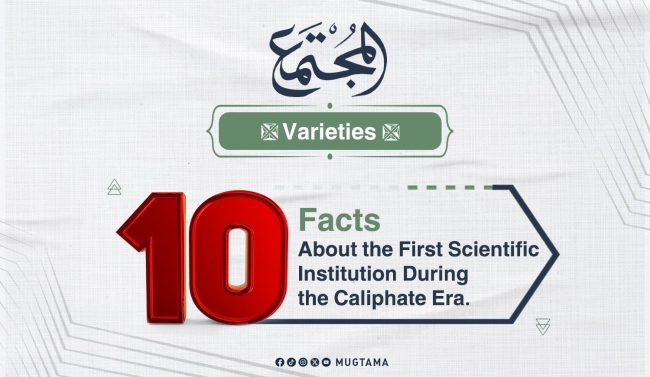10 facts about the First Scientific Institution During the Caliphate Era.
The translation movement and cultural renaissance flourished during the Abbasid Caliphate, specifically during the reign of Caliph Harun al-Rashid and his sons al-Ma'mun and al-Mu'tasim, starting from the second half of the 2nd century AH.
One of the signs of this renaissance was the establishment of the "House of Wisdom" during the reign of Caliph al-Ma'mun. It served as a major scientific and technological university in the world at that time, focusing on astronomy, mathematics, engineering, medicine, translation, philosophy, and other fields.
However, what distinguished this period was the emphasis on prodigies and scientific talents. The first scientific institution that characterized the era of the Caliphate was the family of Musa ibn Shakir, according to Al Jazeera website, with Musa and his sons Muhammad, al-Hasan, and Ahmad as inventors.
The following paragraphs highlight the journey of this family in several points:
1- Musa ibn Shakir was renowned for his interest in astronomy, star positions, and their movements throughout the seasons. Caliph al-Ma'mun (218 AH / 833 CE) appointed him as an astronomer in his court, meaning a scholar of astronomy and its affairs.
2- Musa built a large observatory on the bridge of Baghdad, aided by his three sons: Muhammad, al-Hasan, and Ahmad. They recorded observations that surpassed, in some aspects, the accuracy achieved by Greek astronomers and mathematicians.
3- After the death of Musa, Caliph al-Ma'mun entrusted his three brilliant sons to the governor of Baghdad, Ishaq ibn Ibrahim al-Mus'abi, and charged him with taking great care of them and providing assistance when needed. He occasionally checked on their well-being.
4- The three brothers continued their brilliance in the fields of mathematics, engineering, and astronomy, forming the most famous and oldest scientific research team in the history of Islamic civilization in the first half of the 2nd century AH / 9th century CE.
5- Each of them specialized in a scientific field: Muhammad focused on mathematics, astronomy, and meteorology, while Ahmad delved into mechanics, and al-Hasan excelled in engineering.
6- They contributed great inventions to humanity, including an environmentally friendly water jug controlled by a mechanism before the invention of the faucet. They also invented the "automatic hook" for retrieving objects sunk in the depths of rivers and seas, as well as the automatic-playing flute powered by water movement.
7- Their book "Al-Hiyal" or mechanics is one of the most famous books they authored as a result of their unified scientific team.
8- They also wrote the book "Knowledge of the Measurement of Simple and Spherical Figures," a valuable book relied upon by many Muslim mathematicians and others.
9- They established a translation department within their home, similar to the translation department established by al-Ma'mun in the House of Wisdom in Baghdad, where they translated a vast number of books in the fields of astronomy, mathematics, and medicine.
10- The eldest brother, Muhammad ibn Musa ibn Shakir, passed away at the age of seventy in the year 259 AH / 872 CE, and his two other brothers passed away in the late 3rd century AH / 9th century CE.
-----------------------------------------------------------------------------------------------------------------------


